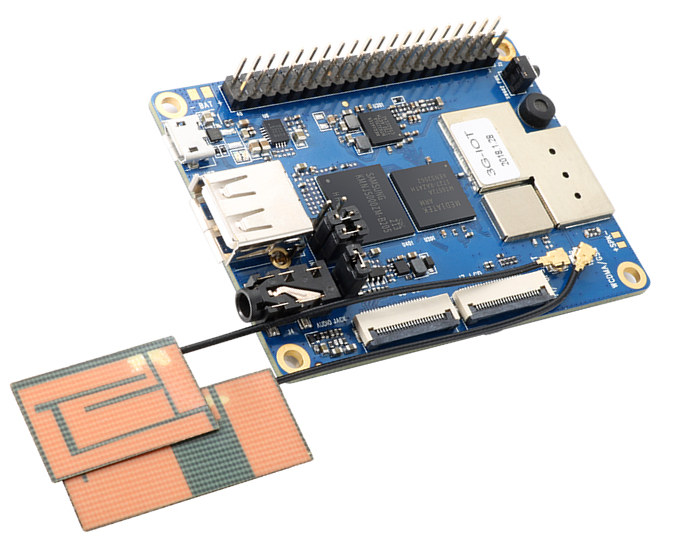We had two Arm Linux SBCs with cellular connectivity from Shenzhen Xunlong so far: Orange Pi 2G-IoT for 2G connectivity, and Orange Pi 4G-IoT with LTE support in Asia and Europe.
But what if you needed 3G connectivity, and did not want to spend $45 on the 4G board? There was no option until today, but the company has just launched Orange Pi 3G-IoT with WCDMA (UMTS), TD-CDMA and CDMA2000 support.
Orange Pi 3G-IoT-B board specifications:
- SoC – MediaTek MT6572 dual core Cortex A7 processor @ up to 1.2 GHz with Arm Mali-400 GPU
- System Memory – 512MB DDR2
- Storage – 4GB eMMC flash, micro SD slot
- Display I/F – FPC connector for FWVGA display (854×480)
- Camera I/F – MIPI connector
- Audio – 3.5mm audio jack, built-in microphone, 2x solder pads for optional speakers
- Connectivity
- Cellular
- Nano SIM card slot
- 2G GSM – 850/900/1800/1900 MHz
- 3G WCDMA -(B1/B2/B5/B8), TD-CDMA, CDMA2000
- WiFi, Bluetooth, FM and GPS all in one
- Cellular
- USB – 1x USB 2.0 host port, 1x micro USB port
- Expansion – 40-pin expansion header with GPIO (1.8V), 2x SPI, 3x I2C, 2X UART
- Misc – Power button, power and status LEDs
- Power Supply – 5V via micro USB port, two solder pads for optional battery
- Dimensions – 68 x 52 mm
I doubt GPS works on the board since I can’t see any specific antenna. The two included antennas are for cellular and WiFi+Bluetooth connectivity.
While Orange Pi 4G-IoT got Android 8.1 support very recently , Orange Pi 3G-IoT is stuck to an ancient Android 4.4 firmware, so that’s something to keep in mind. What’s missing from Orange Pi IoT cellular board however is support for Linux operating system. The company normally releases an Android SDK for their boards, which obviously include the Linux kernel, so maybe there’s still a chance for Linux support considering the very affordable price.
For reference, I previously tested a 3G + GPS HAT for Raspberry Pi, and the total cost of the solution was close to $120 with a Raspberry Pi 3 board and all antennas. The main benefits is that it works out of the box with Linux. A cheaper Raspberry Pi based 3G solution would be to combine a Raspberry Pi Zero W ($10) with a refurbished 3G USB dongle ($17 shipped on Aliexpress), USB OTG adapter, and micro SD card. This kit would have a similar price as Orange Pi 3G-IoT board, but with less hardware features, and not quite as neat due to cabling. Linux should easily work though.

Jean-Luc started CNX Software in 2010 as a part-time endeavor, before quitting his job as a software engineering manager, and starting to write daily news, and reviews full time later in 2011.
Support CNX Software! Donate via cryptocurrencies, become a Patron on Patreon, or purchase goods on Amazon or Aliexpress






